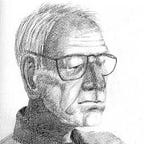The Ringallee
I began appreciating the hundreds of years that went into the making of our village in the State of Bavaria during the lockdowns of the Covid pandemic and restrictions on travelling. From my third-floor corner office window, I stared down at remnants of a wall and a moat surrounding the village. Those were the fortifications that were built in 1558 CE for a village that was founded in 875 CE.
It was not until the Lazy Cat coffee shop began building a patio in 2021 CE into what is now the grass-ditch remnant of the moat and wall fortifications of the village. I was looking back and appreciating the landscape architecture that went into the previous thousand years. It is now called the Ringallee.
The first thing that comes to mind is that the architectural setting of the Ringallee is nature. The three-hundred Chestnut trees on both sides of the footpath announce the seasons especially fall, winter, and summer.
The ducks, goldfish, carp, and black swans live in an eighth of the preserved moat, that once circled the entire village. Unfortunately, Schnipsi and Herbert, the black swans, are the most photogenic.
My favorite house alongside the Ringallee, is in the style of Art Nouveau between 1890 and 1900. In Germany it is called, Jugendstil, or Youth Style.
Lastly, the Ringallee is sprinkled with statuary from artists in the neighborhood that loaned their work to the community.
Christl and I use the Ringallee once a day for walking exercise. A full walk around the Ringallee is 1.6 Kilometers including climbing three flights of stairs.
We both love the Ringallee for the landscape architecture that has survived four-hundred and sixty-three years and the natural wonders that contribute to our daily exercise.
